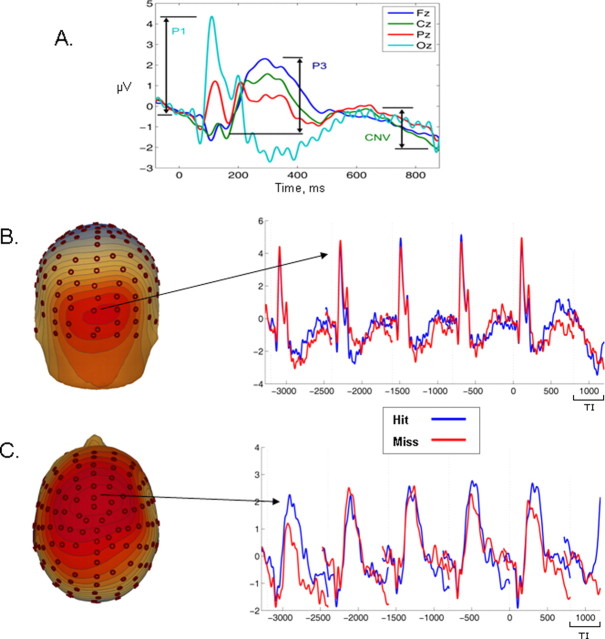Figure 3.
Short-term pretarget epoch. A, Grand-average ERP waveform for the five frames immediately preceding the target interval (TI) and collapsed across outcome. This waveform was used as the basis for defining component measurement intervals for the short- and long-term pretarget analysis. B, C, Grand-average ERP waveforms and associated scalp topographies within the epoch of −4000 ms pre-TI averaged separately according to subsequent target identification performance (hit, miss). Each stimulus change elicited a clear P1 response over visual areas (B), but its amplitude did not discriminate the two detection conditions, suggesting that basic visual processing was equated. In addition, each standard stimulus change elicited a strong P3 component over frontocentral scalp (C) that was increased before a hit relative to a miss.

